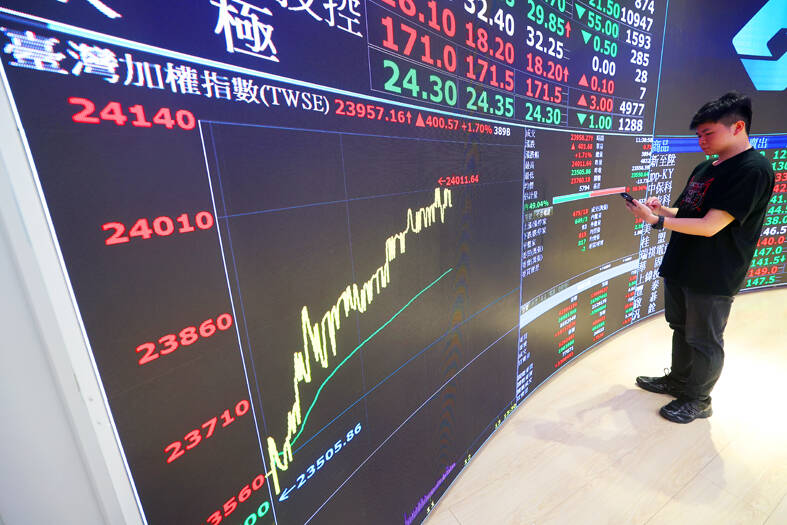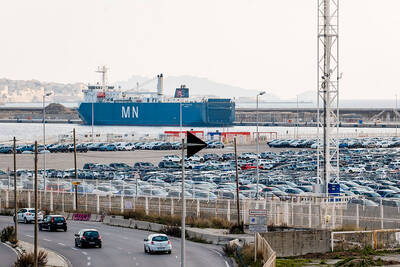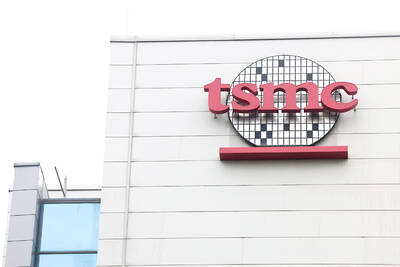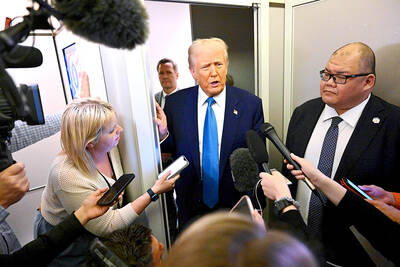The race to replace China’s top spot in emerging market equity portfolios is heating up, with Taiwan and India running neck and neck as formidable rivals.
Thanks to record stock rallies, Taiwan and India now command more than 19 percent weightings each in the MSCI EM Index. That compares with China’s 22.8 percent, whose standing has steadily shrunk over the past few years, Bloomberg-compiled data showed.
The rise of Taiwan and India is allowing investors to better diversify by betting on artificial intelligence (AI) chipmakers and the infrastructure boom coming from Indian Prime Minister Narendra Modi’s programs to modernize the country.

Photo: CNA
As the US rate cycle peaks out, having attractive options in emerging markets is fundamental to any pivoting of capital flows.
“Investors are seeking ways to manage the risk associated with China’s outsized weight in emerging markets by diversifying into other markets,” Straits Investment Holdings Pte Ltd fund manager Manish Bhargava said in Singapore.
“Taiwan’s technological prowess, particularly in the semiconductor industry, and India’s growing tech sector and digital economy make them attractive alternatives,” Bhargava added.
At its peak in 2020, China accounted for 40 percent of the MSCI EM Index, with investors attracted by thriving e-commerce to sales of expensive liquor. That heavy weightage cost money managers dearly, with trillions of dollars wiped out as Beijing embarked on regulatory crackdowns and went on a deleveraging campaign for its indebted property sector.
If recent trends hold, Taiwan or India might catch up with China’s standing in MSCI EM this year, marking a shift into a multipolar emerging markets world.
Taiwan’s ascent is all the more notable considering its market capitalization — at US$2.6 trillion — stands at less than a third of China’s. The TAIEX has risen 33 percent this year to become one of the best-performing major benchmarks, bolstered by gains in Nvidia Corp supplier Taiwan Semiconductor Manufacturing Co (台積電).
Meanwhile, India’s NIFTY 50 Index has advanced more than 12 percent this year, hitting a fresh high as Modi promised policy continuity.
That’s in contrast to the sluggishness in Chinese stocks. Benchmarks have barely gained for the year, highlighting an urgency for policymakers to unveil a road map to resolve woes like the property crisis.
Underscoring the trend, the number of EM Ex-China fund launches so far this year is just three short of last year’s annual record, data compiled by Bloomberg showed.
Earnings are a crucial factor behind the allocation preferences. The 12-month forward earnings estimates for the MSCI China Index have barely changed year to date, while those for Taiwan and India have increased by at least 13 percent each.
“EM ex-China looks solid from an earnings angle,” Bloomberg Intelligence quantitative strategist Kumar Gautam said. “The gap between China and EM ex-China earnings revision is at a historical high and China’s earnings revision is too slow to pick up.”
To be sure, valuations can put some brakes on the bullish sentiment. The TAIEX and NIFTY 50 both trade at about 20 times of forward estimated earnings, compared with MSCI China at a little above nine.
Still, money continues to support the shift.
Emerging Asia ex-China’s equity markets recorded net inflows of about US$9 billion since the start of last month, with South Korea, India and Taiwan among the top recipients, data compiled by Bloomberg showed.
Meanwhile, mainland China has seen outflows via the trading links with Hong Kong during the period.
“Tech is eating the world,” Abrdn PLC senior investment director Pruksa Iamthongthong said. “This only compounds with AI, and we see the real winners as Asian tech hardware and semiconductor supply chain names.”

When an apartment comes up for rent in Germany’s big cities, hundreds of prospective tenants often queue down the street to view it, but the acute shortage of affordable housing is getting scant attention ahead of today’s snap general election. “Housing is one of the main problems for people, but nobody talks about it, nobody takes it seriously,” said Andreas Ibel, president of Build Europe, an association representing housing developers. Migration and the sluggish economy top the list of voters’ concerns, but analysts say housing policy fails to break through as returns on investment take time to register, making the

‘SILVER LINING’: Although the news caused TSMC to fall on the local market, an analyst said that as tariffs are not set to go into effect until April, there is still time for negotiations US President Donald Trump on Tuesday said that he would likely impose tariffs on semiconductor, automobile and pharmaceutical imports of about 25 percent, with an announcement coming as soon as April 2 in a move that would represent a dramatic widening of the US leader’s trade war. “I probably will tell you that on April 2, but it’ll be in the neighborhood of 25 percent,” Trump told reporters at his Mar-a-Lago club when asked about his plan for auto tariffs. Asked about similar levies on pharmaceutical drugs and semiconductors, the president said that “it’ll be 25 percent and higher, and it’ll

NOT TO WORRY: Some people are concerned funds might continue moving out of the country, but the central bank said financial account outflows are not unusual in Taiwan Taiwan’s outbound investments hit a new high last year due to investments made by contract chipmaker Taiwan Semiconductor Manufacturing Co (TSMC, 台積電) and other major manufacturers to boost global expansion, the central bank said on Thursday. The net increase in outbound investments last year reached a record US$21.05 billion, while the net increase in outbound investments by Taiwanese residents reached a record US$31.98 billion, central bank data showed. Chen Fei-wen (陳斐紋), deputy director of the central bank’s Department of Economic Research, said the increase was largely due to TSMC’s efforts to expand production in the US and Japan. Investments by Vanguard International

WARNING SHOT: The US president has threatened to impose 25 percent tariffs on all imported vehicles, and similar or higher duties on pharmaceuticals and semiconductors US President Donald Trump on Wednesday suggested that a trade deal with China was “possible” — a key target in the US leader’s tariffs policy. The US in 2020 had already agreed to “a great trade deal with China” and a new deal was “possible,” Trump said. Trump said he expected Chinese President Xi Jinping (習近平) to visit the US, without giving a timeline for his trip. Trump also said that he was talking to China about TikTok, as the US seeks to broker a sale of the popular app owned by Chinese firm ByteDance Ltd (字節跳動). Trump last week said that he had